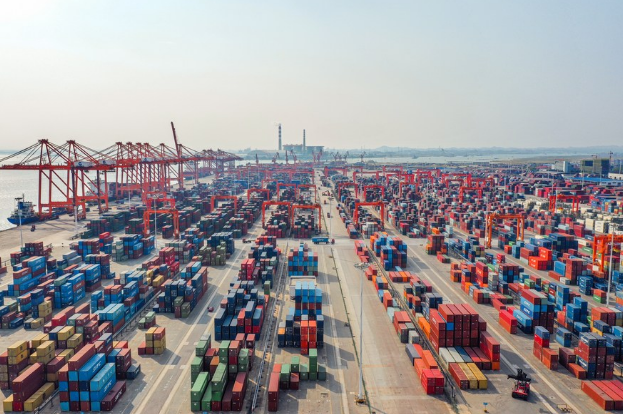BEIJING, Sept. 2 (Xinhua) -- The construction of the New International Land-Sea Trade Corridor has maintained robust momentum over the past two years despite the impact of COVID-19, the National Development and Reform Commission (NDRC) said Thursday.
On the corridor, goods are transported via various modes including railways, highways and water routes to the Beibu Gulf in Guangxi Zhuang Autonomous Region before being shipped to other parts of the world along the sea routes. The corridor offers a faster alternative for western Chinese provinces and autonomous regions other than transporting goods via the east coast.
The number of rail-sea intermodal trains passing via Beibu Gulf hit 4,607 in 2020, skyrocketing 105 percent from a year earlier. Meanwhile, the level of infrastructure construction and logistics services have advanced steadily during the construction of the corridor, Zhou Xiaoqi, an NDRC official, told a press conference.
Cooperation on international trade, logistics and financial services have also been facilitated among countries and regions along and near the corridor, according to the NDRC.
China has released a proposal on high-quality construction of the corridor for the 14th five-year plan period (2021-2015), planning to achieve cargo throughput of over 500 million tonnes at ports in Beibu Gulf and foreign trade container throughput of more than 2 million twenty-foot equivalent units (TEU).
Chongqing Municipality, as the center of operation for the corridor, has also expanded its transport capacity. It currently boasts three main transport channels including rail and sea transport routes, cross-border highway shuttle buses and international freight trains.
By the end of July, the freight trains crossing the city have shipped over 220,000 TEUs of goods with a total value of 40 billion yuan (about 6.19 billion U.S. dollars) to the New International Land-Sea Trade Corridor. Enditem




 A single purchase
A single purchase









